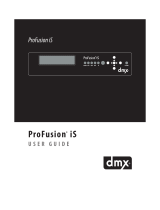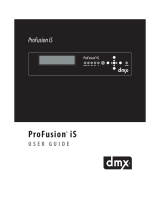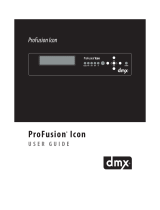Page is loading ...

1
ZKLWHýSDSHU
ZKLWHýSDSHUZKLWHýSDSHU
ZKLWHýSDSHU
+3ý 1HW6HUYHUý/;Uýåèíí
MXQHýìäää
$UFKLWHFWXUHî7HFKQRORJ\ý2YHUYLHZ
Executive Summary
The data center, a mission-critical, enterprise facility, is a complex and
demanding technology environment, requiring computing equipment that is
extraordinarily reliable, scalable and manageable. Data center server
equipment must provide the level of high availability that data center
customers demand. The server manufacturer also must provide the level of
service and support that these customers expect.
HP now offers a new server in the HP NetServer product family, which
complements the HP PA-RISC products. The new, high level of computing
power provided by the HP NetServer LXr 8500 can address the major
computing challenges customers face today in enterprise resource planning
(ERP), database management systems (DBMS) including on-line transaction
processing (OLTP), data warehousing and data marts, thin client,
consolidated messaging, and many other applications.
This white paper will focus on the technical aspects of the HP NetServer
LXr 8500. This server is an 8-way capable product, supporting the latest and
most powerful Intel processor, the Intel
®
Pentium
®
III Xeon™. The product is
optimized for the data center; specifically, elements of the architecture,
configuration and industrial design were chosen to meet the requirements of
this market.
Introduction
Data Center Needs
The data center, as a repository of information assets, is an integral
component of the enterprise infrastructure. It generally consists of mission-
critical, application-specific data stored in large databases and on file servers.
Long-emerging trends and technologies such as network computing, the
Internet and massive data growth are dramatically increasing the demands on
this environment.
Selecting the appropriate server equipment that resides at the center of this
information web is critical. Each of the components in a server system must
be balanced and scalable for maximum throughput capability under a variety
of application loads, whether the workload is CPU, I/O or network intensive.

ZKLWHýSDSHU
2
+3ý 1HW6HUYHUý /;Uýåèíí
0
1000
2000
3000
4000
July 97
One
Pentium
Pro
Oct 97
Two
Pentium
Pro
Dec 98
Four
Pentium
Pro
Nov 98
Four
Pentium II
Xeon
June 99
Eight
Pentium III
Xeon
transactions per second
LXr 8500
LXr 8000
LX Pro
(KIWTG"30"6TCPUCEVKQP"RGTHQTOCPEG
KORTQXGOGPV"HQT"*2"0GV5GTXGTU
UKPEG"3;;9
Scalability
The Profusion SMP chipset architecture
delivers the highest levels of
performance and scalability for Intel-
based systems. Compared to previous
generations of SMP architectures and
the performance of a single processor,
the HP NetServer LXr 8500 provides
improved scalability (see Figure 1) to
8 processors for Microsoft Windows
NT™ Server 4.0, Microsoft Windows™
2000, or Novell
®
NetWare.
The scalability of the HP NetServer
LXr 8500 is impressive. Since the server
is available in configurations from one to
eight 550 MHz Pentium III Xeon
processors with L2 cache sizes of 1 MB
or 2 MB, it provides a wide range of
compute capability. Using ServerBench
measurements, scaling from two to four
processors increases system throughput
by 1.8 times, which is equivalent to 80%
more transactions processed each
second. When the system is scaled from
four to eight processors, then the
throughput improves by a factor of
more than 1.5.
Processor scaling is only one aspect of system scalability, however. The capability to
add memory, mass storage and network I/O capacity is also important. Most applications
that need a significant gain in overall transaction throughput will benefit by scaling all
system hardware resources. In many cases, adding CPU power is less effective than
adding memory or I/O bandwidth. On the HP NetServer LXr 8500, fully provisioning the
PCI I/O accessory slots can add several times the workload of a minimal system.
The HP NetServer LXr 8500 employs the Intel Profusion™ chipset, jointly developed by
Intel and Corollary (now part of Intel), to provide a breakthrough 8-way Symmetric Multi-
Processing (SMP) architecture. SMP architecture is one in which two or more linked
processors are contained in a single enclosure and work cooperatively on sets of tasks.
The processors are identical to each other and have shared access to all system
resources.

ZKLWHýSDSHU
3
+3ý 1HW6HUYHUý /;Uýåèíí
8-way Architecture Overview
The HP NetServer LXr 8500, an 8-way capable server, is based on the Intel Profusion
chipset: a tightly coupled, multi-ported symmetric multi-processing system architecture
(see Figure 2). The multi-ported system controller enables simultaneous communications,
via dual 64-bit wide buses, between any combination of eight CPUs, four I/O bridges and
up to 32 GB of shared memory. There are three system (P6) buses in this design, two
dedicated to the CPUs and one to system I/O. Each of these buses runs at 100 MHz,
800 MB/s. To assure data integrity and improve system performance, a novel cache
coherency mechanism is employed to reduce conflicts for access across the buses. The
Profusion chipset makes the HP NetServer LXr 8500 equally effective whether the
application is memory-intensive, data-intensive or processor-intensive.
(KIWTG"40"2TQHWUKQP"CTEJKVGEVWTG"DNQEM"FKCITCO
The Profusion system controller allows direct point-to-point, simultaneous access to all
system resources, producing a balanced server platform. Two processor buses and
innovative cache coherency filters reduce CPU overhead and traffic, providing maximum
processor scalability. In addition, dual-memory bus architecture has been included to
reduce memory bottlenecks and provide memory scalability. Finally, four multi-peer PCI
bridge chips provide the LXr 8500 system with four separate peer PCI buses. Each PCI

ZKLWHýSDSHU
4
+3ý 1HW6HUYHUý /;Uýåèíí
bridge, combined with the Profusion chipset, permits the system to handle long bursts of
data (streaming) due to the write-posting buffers, another feature that improves data flow
and further balances the system.
The paper continues by providing detailed information on the following points:
• The Profusion design supports from two to eight Intel Pentium II or Pentium III Xeon
processors.
• The memory design facilitates two subsystems of dual interleaved ECC memory with up
to 16 DIMMs in each memory bank.
• The standard configuration for the LXr 8500 includes two cache coherency filters for
improved server performance.
• The I/O port connects to four Bus-to-PCI bridges that together support ten hot-plug,
64-bit PCI slots; four of these are 66 MHz PCI slots and the remaining six are 33 MHz
PCI slots.
Processors
The HP NetServer LXr 8500 uses Pentium III Xeon processors at 550 MHz. The server
supports from one to eight of these processors. The Intel Pentium III Xeon processor
includes the latest improvements in performance-enabling instruction sets, although it still
provides the same cartridge form factor as its predecessor, the Pentium II Xeon. The
Pentium III Xeon processors will be available with L2 cache sizes of 1MB and 2MB. Larger
Level 2 caches serve to reduce system bus activity enhancing performance, especially in
systems with over four processors.
The NetServer LXr 8500 will be able to be upgraded to future generations of Pentium III
Xeon processors.
Memory
The Profusion chip set supports up to 32 GB of synchronous dynamic random-access
memory (SDRAM), ideal for memory-intensive applications such as enterprise resource
planning and messaging. The system divides the memory into two carrier boards of up to
16 GB of interleaved SDRAM, that are connected to two ports on the Profusion system
controller switch. Interleaving improves memory access performance because both
memory buses can be simultaneously active. One bus responds to odd-numbered cache
line requests, the other to the even-numbered lines. Two buses increase memory
bandwidth, reduce access conflicts and increase the maximum memory supported.
(Memory interleaving is only available when both memory carrier boards are included in the
system configuration.)

ZKLWHýSDSHU
5
+3ý 1HW6HUYHUý /;Uýåèíí
Input/Output (I/O)
The Profusion chipset provides for a dedicated I/O bus to which up to four PCI bridges may
be attached. Two of the four host-to-PCI bridges (or I/O controller) support 64-bit, 66 MHz
PCI transactions, four times the maximum theoretical bandwidth of the current 32-bit,
33 MHz PCI bus. The other two bridges support 64-bit, 33 MHz PCI slots. I/O throughput is
improved since the PCI controllers are now connected to the I/O bus rather than the
processor bus as in prior generations.
As can be seen from Figure 2, the I/O bus handles all of the I/O traffic, reducing the impact
upon the processor buses and upon the processors’ interfacing with memory. Since there
is no contention between the I/O and processor activity, this new architecture allows for
greater throughput and improved scalability. 66 MHz, 64-bit PCI enables the use of the
latest high performance I/O adapters for networking and storage.
Processor Cache Coherency Filter
The processor cache coherency filter is memory that is used to keep track of data that each
processor bus has cached. The processor cache coherency filters (2) are used in
conjunction with the I/O coherency filter memory (stored within the Profusion chipset) to
store information about data that has been cached on either of the two P6 processor
buses. When a processor on one bus makes a request for data, the Profusion chipset looks
at the information stored in the coherency filter for the other bus, to determine if the
required data is cached there. If it sees that the data is not cached there, it can go directly
to memory, reducing search time and system overhead, thereby improving system
performance.
System Management Features
Industry initiatives supported by HP and Intel also promote a balanced platform that
improves overall system performance and lowers the total cost of ownership for the
enterprise-class server.
• Intelligent Platform Management Interface or IPMI: IPMI defines an industry
standard, co-developed by HP and Intel, which provides a common framework that
specifies how system devices communicate in a standard way. The devices are
monitored and coordinated through a management controller, which reduces load on
the CPU, improving performance. The management controller also logs all system
events to embedded, non-volatile memory. The log also aids recovery, should a device
fail, since it provides a detailed record of the event. The HP NetServer LXr 8500 is
IPMI-compliant.
• Virtual Interface Architecture or VIA: An industry-standard architecture enabling the
clustering of standard high volume Intel-based servers. VIA results in highly scalable,
enterprise-class platforms optimized for data warehousing, decision support and
transaction processing applications. VIA standards have been incorporated into the
design of the HP NetServer LXr 8500.

ZKLWHýSDSHU
6
+3ý 1HW6HUYHUý /;Uýåèíí
Enhanced Software
Intel has released new instructions associated with the Pentium III Xeon processors.
These instructions are called Streaming Single Instruction, Multiple Data (SIMD)
Extensions. These extensions serve to boost the performance of TCP/IP-based
applications for messaging, Internet- and intranet-related functions.
Other business-critical applications such as database and ERP applications will also
benefit, achieving notable performance increases. SIMD extensions help memory-intensive
applications use the system resources more efficiently when processing computing tasks.
System efficiencies increase because the extensions give these applications their
instructions on using main memory, L1 and L2 caches to accelerate application
performance. SIMD extensions also streamline the TCP/IP stack, which improves the
functionality of streaming media applications such as voice recognition or compression
software, as well as Web hosting and e-commerce transactions.
Improving System Uptime: Availability
Beyond building reliable, high quality servers, HP has implemented a number of techniques
to improve server uptime, a critical measure for data centers, where the data must always
be accessible to the users.
Redundancy HP has provided redundancy (a means of preventing failures) for several
components and subsystems in the design of the HP NetServer LXr 8500. For example,
power supplies and fans are included at the N+1 level, one more than is required to support
the system. Should one fail, the others can assume the load until the failed one is replaced.
Additionally, since both the fans and power supplies are hot swappable, the server can
continue to run while the repairs are made.
HP has also designed for processor redundancy, de-allocating a processor should it fail.
The system will also de-allocate failed memory DIMMs, a failed processor bus or a failed
memory board. The system will still boot up, loading the NOS while ignoring the failed
component. (This capability assumes a configuration that contains at minimum, two buses,
two memory boards and two DIMMs.)
Automated Failure Recovery Should a system fail, automated failure recovery allows for
quick recovery from a failure. Features in this category include automatic server restart
(ASR), Error Checking and Correcting (ECC) memory and new data backup capabilities.
HP is the first major server vendor to offer a hardware-based One-Button Disaster-
Recovery tape backup solution. Without needing technical assistance, customers simply
can insert the most recent backup tape and push one button on their HP SureStore DDS
tape drive. The system will automatically boot from the tape drive, restoring the operating
system, configurations, applications, device drivers and files to exactly the way they were at
the time of the last backup.

ZKLWHýSDSHU
7
+3ý 1HW6HUYHUý /;Uýåèíí
Server Clustering To further assure system availability, server clustering is often
employed. HP supports four different programs from several vendors including Microsoft
Cluster Server, Vinca Co-Standby
Server,
NSI Software Double-Take
®
and Novell SFT III,
all for HP NetServers. Depending upon the cluster program, either 2-node or 4-node
clustering is possible, increasing system uptime for the data center.
Remote Management
The HP LXr 8500 includes several powerful management features built into the architecture
of the server. Micro-controllers and I
2
C buses permit system event log management.
Remote management is available via the RMC, a plug-in card.
Industrial Design
The physical design of the HP NetServer LXr 8500 has also been optimized for the data
center in several ways.
The server is rack-mounted in a 7U (12.25 in. or 31.12 cm) rack height, “rackable and
stackable”, which is important as the data center consolidates servers. Since this is an
8-way server, the processor density is very high, over a very small footprint. The design
conserves floor space, which is at a premium as the amount of equipment continues to
increase. Five servers can be stacked in one 2-meter tall rack (41U) to a maximum
40 Pentium III Xeon 550 MHz processors per rack. Tremendous processing power in a very
small space.
High processor density produces high levels of heat. The fan cooling system has been
optimized to remove the heat load, with extra fan capacity to spare. (The importance of
redundancy was explained earlier.)
Since availability is so important in a data center, this server has been designed for quick
replacement of key components. Identification of component status is aided by easy-to-
read LED indicators for the overall system, fans, power supplies and PCI cards, each of
which can be replaced without shutting down the system. Adding more memory or more
processors requires that the system be shut down for a very short time.

ZKLWHýSDSHU
8
+3ý 1HW6HUYHUý /;Uýåèíí
Conclusion
HP Philosophy and Strategy
HP’s approach to meet the needs of the data center is based first on solid system design
and manufacturing of all server components and subsystems. The most effective approach
to improving performance, availability and scalability is to keep faults from occurring in the
first place. HP’s design philosophy for the 8-way symmetric multiprocessing (SMP) system
was simple: lead in all areas of performance, scalability, manageability, availability and
reliability. The Profusion architecture is a uniquely balanced design where the performance
capabilities of the processors, cache, I/O subsystems and memory are matched. The
customer does not have to make tradeoffs between CPU and memory capacity or between
CPU and I/O capacity to achieve high performance.
The HP NetServer Family
HP has designed this new HP NetServer, the LXr 8500, to be optimized for the complex
and demanding technology environment of the mission-critical data center. This server is
8-way capable, meeting the performance, scalability, storage density, configuration and
high availability needs of the data center. The architecture, including the Intel Profusion
chipset, configuration and industrial design of this server has also been carefully
implemented. Finally, the server will also grow with the enterprise facility, able to be
upgraded in several key aspects.
The HP NetServer LXr 8500 is the highest performing server of the HP NetServer family of
products (see Figure 3). The HP NetServer LXr 8500 continues the HP NetServer tradition,
providing the outstanding performance for a server of its class, combined with lasting
investment protection, scalability, proven high availability and the best of service and
support in the industry.

ZKLWHýSDSHU
9
+3ý 1HW6HUYHUý /;Uýåèíí
Corporate
Corporate
L-Series
L-Series
Pedestal
Pedestal
Small to Medium
Small to Medium
Business
Business
E-Series
E-Series
Corporate
Corporate
L-Series
L-Series
Rackable
Rackable
LPr
LXr 8000
LC 3
LH 3r
LH 3
LH 4
LH 4r
E 60
LXr 8500
(KIWTG"50"*2"0GV5GTX GT"(COKN[
The HP NetServer LXr 8500 is the second 8-way Intel-based SMP server to have been
offered by HP. The first eight-way SMP system was launched in November 1997 and was
based upon the Pentium Pro processor. It was one of the first 8-way Pentium Pro servers
to market. In addition to these servers, HP has more than 20 years of experience in
providing computing solutions and has amassed a wealth of knowledge in the uses of
multiple processors. The knowledge and experience has been incorporated into the current
8-way products.

ZKLWHýSDSHU
10
+3ý 1HW6HUYHUý /;Uýåèíí
For More Information
HP has several white papers and technology briefs that describe in more detail, memory,
processor selection, clustering, IPMI and availability. Please see the technical papers
section of the HP NetServer web site at:
http://www.netserver.hp.com/papers
For more information on Intel Pentium III Xeon processors and chipsets, see
http://www.intel.com
Microsoft Cluster Server is a registered trademark of Microsoft Corporation. Microsoft Windows NT is a registered trademark of Microsoft Corporation.
All other brand names are trademarks of their respective owners. Information in this document is subject to change without notice.
©Copyright Hewlett-Packard Company 1999. All Rights Reserved. Technical information in this document is subject to change without notice.
/





